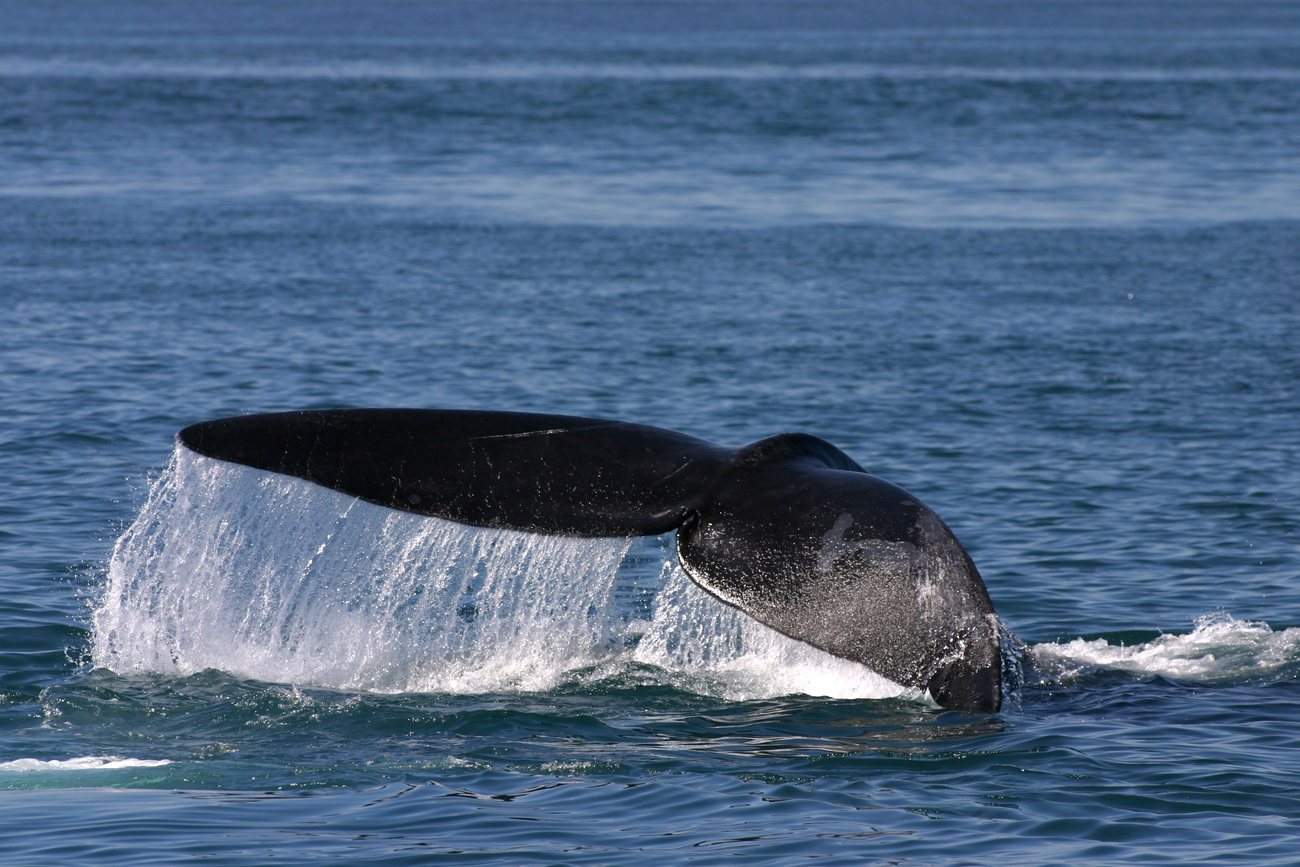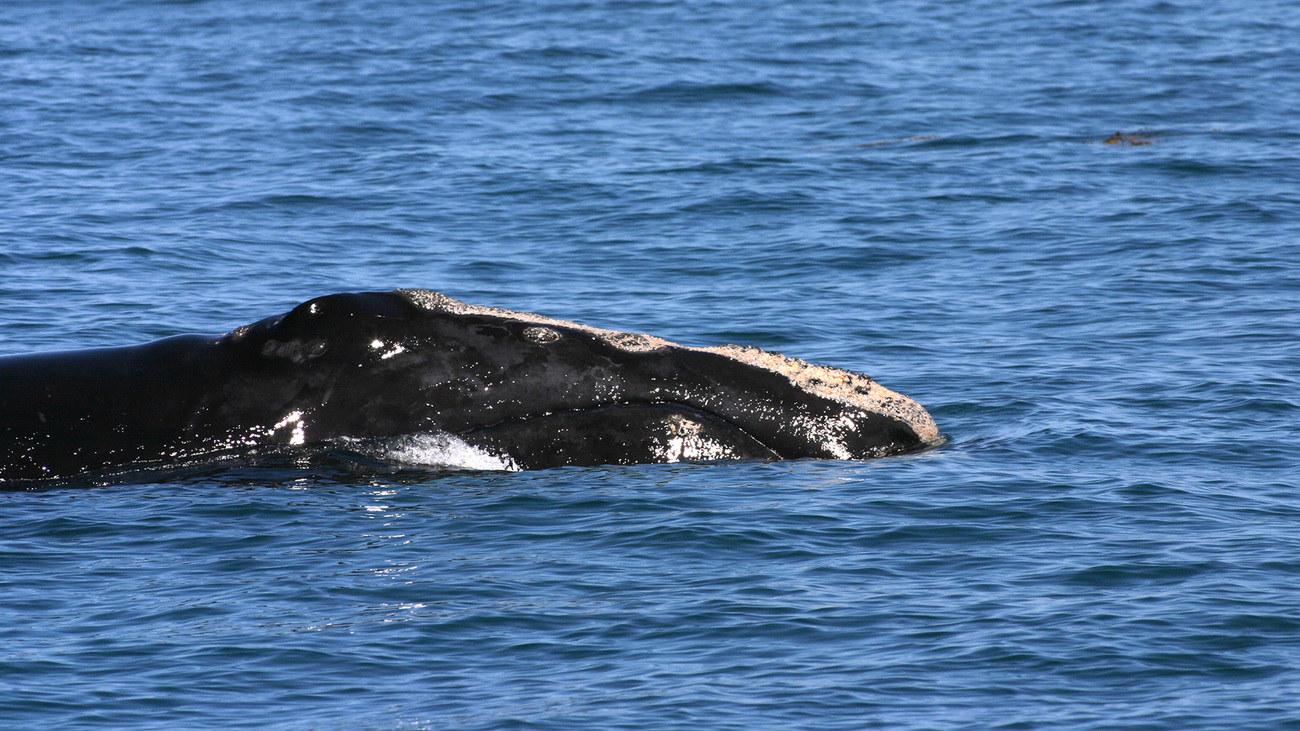Saving the North Atlantic right whale - North America
Don't fail our whaleWarming Gulf of Maine imperils right whales
Warming Gulf of Maine imperils right whales

The Gulf of Maine is one of the bodies of water most negatively affected by climate change. It also happens to be one of the most critical habitats and foraging grounds of the critically endangered North Atlantic right whale. Its rapid warming is taking a massive toll on the species’ migratory patterns.
Critical ecosystem under threat
One of the world’s most dynamic and productive marine ecosystems, the Gulf of Maine encompasses over 12,000 kilometres of coastline along the shores of Massachusetts, New Hampshire, Maine, New Brunswick, and Nova Scotia.
Also a flourishing commercial hub, the Gulf’s fisheries support more than 4,000 fishermen and generate USD$900 million to USD$1.3 billion in annual revenue from commercial fisheries. The Gulf of Maine also has a thriving lobster industry, catching more than two-thirds of the total U.S. lobster landings and generating nearly USD$675 million in revenue in 2019 alone.
More than 3,200 coastal and marine species live in the Gulf, including the North Atlantic right whale, which visits the area to feed after calving off the southern coast of the Eastern Seaboard.
Worryingly, the Gulf of Maine has warmed faster than 99% of the global ocean and over four times faster than the global average rate over the last decade. In 2022, the Gulf of Maine experienced its second-warmest year on record, only outpaced by its warmest year in 2021. The water’s warming can largely be attributed to human-caused rising sea temperatures, melting in the artic, and changing ocean circulation patterns.
That warming puts a myriad of species, including North Atlantic right whales, at risk—along with the livelihoods of coastal communities that depend on the Gulf’s fisheries.
Right whales are climate victims
The Gulf of Maine is a key stopover in the North Atlantic right whale’s migration due to its high concentrations of one of their primary food sources, copepods. As sea temperatures rise, copepods seek cooler water habitats, requiring right whales to either visit the Gulf of Maine earlier in the year or pass it by completely and instead feed in the Gulf of St. Lawrence in Canada—a region heavily occupied by the fishing and shipping industries.
In 2017, elevated North Atlantic right whale deaths, mainly in the Gulf of St. Lawrence, led to the declaration of an Unusual Mortality Event by the National Oceanic and Atmospheric Association. This underscores the necessity of more research and study of North Atlantic right whale migratory activity to ensure the right protections are in place at the right times and locations.
As researchers continue to measure North Atlantic right whale activity, studies have already shown that right whales have been in the Gulf of St. Lawrence eight months out of the year—from May until December—not just in the summer months. This contrasts previous research which showed that North Atlantic right whales were rarely sighted in the Gulf of St. Lawrence prior to 2010. Understanding the impact of climate change on the North Atlantic right whale is critical to managing the risks they face; for instance, detection of the whale’s presence can trigger additional conservation management regulations such as shipping speed reductions and fishery closures.

Capturing carbon
Protecting the North Atlantic right whale population throughout their habitat, including the Gulf of Maine, is critical to addressing climate change. Whales are a major contributor to the carbon capture cycle by accumulating carbon in their bodies throughout their lifetime and taking it to the bottom of the ocean—and out of the atmosphere for centuries—when they die. To put this in perspective, one whale sequesters 33 tons of CO2 on average in their lifetime. Trees, for comparison, only absorb 48 pounds of CO2 per year. In addition to capturing carbon, the presence of whales has been found to boost phytoplankton populations. These creatures produce almost 50 percent of all oxygen in our atmosphere while capturing 40 percent of all CO2 produced. If whales were able to return to their pre-whaling population numbers, phytoplankton populations would also increase. Even a one percent increase in phytoplankton productivity would lead to the capture of hundreds of millions of tons of captured CO2 per year.
Research targets the Gulf of Maine
With the North Atlantic right whale on the brink of extinction, more data needs to be collected on their changing migratory patterns. IFAW commissioned a 70-foot research vessel to follow mother-calf pairs along the eastern coast of the US. The around-the-clock surveying and data collection conducted by Song of the Whale is critical to determining where the whales are, how they’re using their habitat, and what threats they may face as they migrate to new feeding grounds. The research will help us understand how and where to reduce the threats these whales face every day, including vessel strikes and entanglement. This year, Song of the Whale completed survey work in the Gulf of Maine off of George’s Bank from April through May. The vessel will likely be returning to the area this fall.
In addition to this enhanced research, IFAW is working to reduce vessel speeds in key right whale habitats to prevent vessel strikes. IFAW is also working with fisherman to transition to alternative fishing gear which uses technological innovation, including GPS tracking systems and inflatable buoys on submerged traps, to reduce the risk of entanglement.
Related content
Our work can’t get done without you. Please give what you can to help animals thrive.